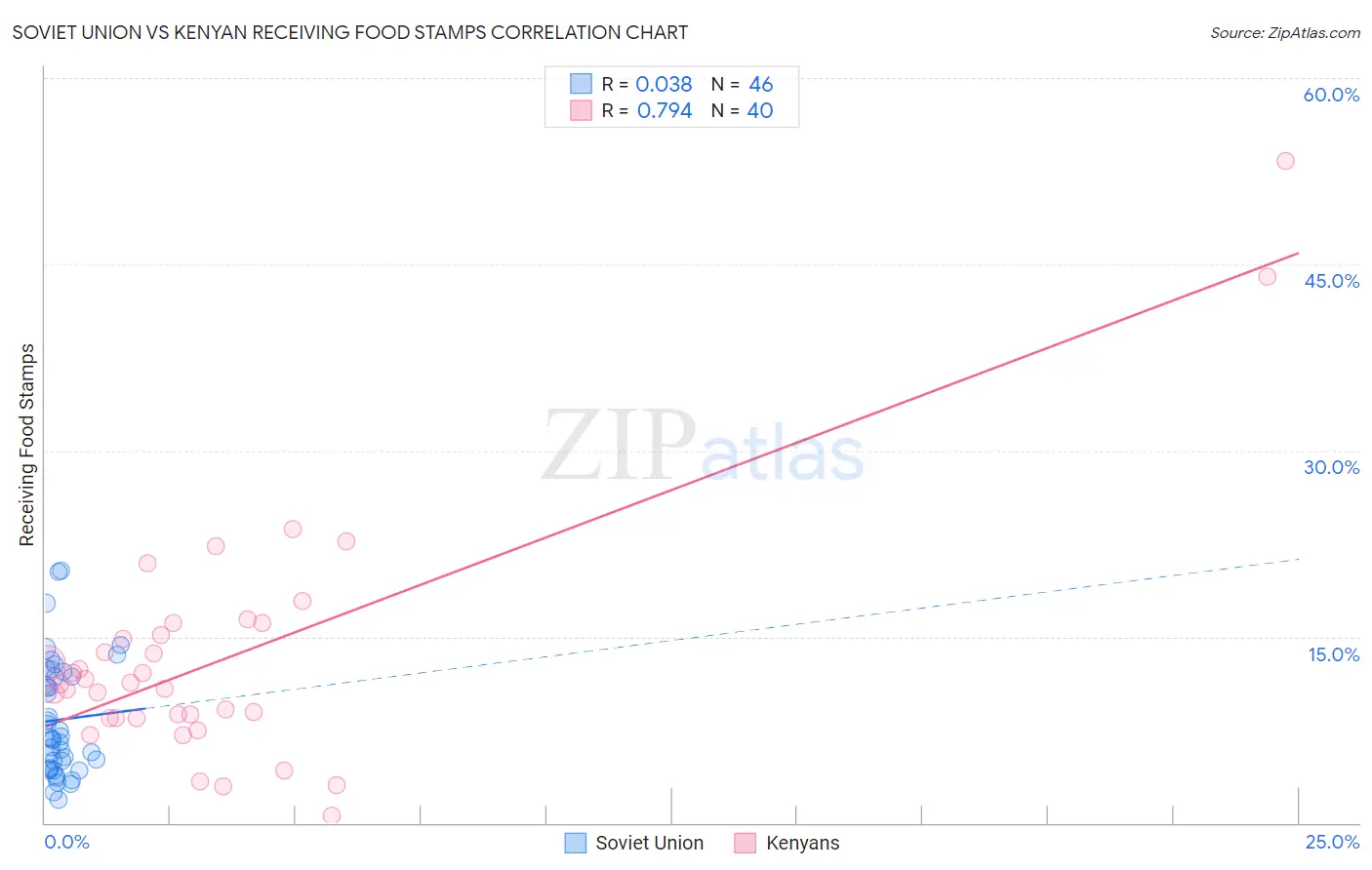Soviet Union vs Kenyan Receiving Food Stamps
COMPARE
Soviet Union
Kenyan
Receiving Food Stamps
Receiving Food Stamps Comparison
Soviet Union
Kenyans
11.1%
RECEIVING FOOD STAMPS
83.1/ 100
METRIC RATING
150th/ 347
METRIC RANK
11.6%
RECEIVING FOOD STAMPS
60.2/ 100
METRIC RATING
167th/ 347
METRIC RANK
Soviet Union vs Kenyan Receiving Food Stamps Correlation Chart
The statistical analysis conducted on geographies consisting of 43,471,584 people shows no correlation between the proportion of Soviet Union and percentage of population receiving government assistance and/or food stamps in the United States with a correlation coefficient (R) of 0.038 and weighted average of 11.1%. Similarly, the statistical analysis conducted on geographies consisting of 168,088,158 people shows a strong positive correlation between the proportion of Kenyans and percentage of population receiving government assistance and/or food stamps in the United States with a correlation coefficient (R) of 0.794 and weighted average of 11.6%, a difference of 4.4%.

Receiving Food Stamps Correlation Summary
| Measurement | Soviet Union | Kenyan |
| Minimum | 1.9% | 0.60% |
| Maximum | 20.3% | 53.3% |
| Range | 18.4% | 52.7% |
| Mean | 8.3% | 13.3% |
| Median | 6.8% | 11.2% |
| Interquartile 25% (IQ1) | 4.4% | 8.5% |
| Interquartile 75% (IQ3) | 11.8% | 15.6% |
| Interquartile Range (IQR) | 7.4% | 7.2% |
| Standard Deviation (Sample) | 4.6% | 9.9% |
| Standard Deviation (Population) | 4.6% | 9.7% |
Demographics Similar to Soviet Union and Kenyans by Receiving Food Stamps
In terms of receiving food stamps, the demographic groups most similar to Soviet Union are Brazilian (11.1%, a difference of 0.020%), Immigrants from South Eastern Asia (11.1%, a difference of 0.040%), Immigrants from Spain (11.1%, a difference of 0.36%), Immigrants from Kazakhstan (11.1%, a difference of 0.36%), and Lebanese (11.1%, a difference of 0.38%). Similarly, the demographic groups most similar to Kenyans are Tlingit-Haida (11.6%, a difference of 0.16%), Immigrants from Belarus (11.5%, a difference of 0.38%), Arab (11.5%, a difference of 0.68%), Immigrants from Chile (11.5%, a difference of 0.74%), and Immigrants from Southern Europe (11.5%, a difference of 0.85%).
| Demographics | Rating | Rank | Receiving Food Stamps |
| Immigrants | South Eastern Asia | 83.3 /100 | #148 | Excellent 11.1% |
| Brazilians | 83.2 /100 | #149 | Excellent 11.1% |
| Soviet Union | 83.1 /100 | #150 | Excellent 11.1% |
| Immigrants | Spain | 81.7 /100 | #151 | Excellent 11.1% |
| Immigrants | Kazakhstan | 81.7 /100 | #152 | Excellent 11.1% |
| Lebanese | 81.6 /100 | #153 | Excellent 11.1% |
| Armenians | 81.4 /100 | #154 | Excellent 11.1% |
| Immigrants | Argentina | 80.4 /100 | #155 | Excellent 11.2% |
| Immigrants | Afghanistan | 75.6 /100 | #156 | Good 11.3% |
| Immigrants | Lebanon | 75.2 /100 | #157 | Good 11.3% |
| Immigrants | Bosnia and Herzegovina | 72.6 /100 | #158 | Good 11.3% |
| Immigrants | Oceania | 70.4 /100 | #159 | Good 11.4% |
| French Canadians | 69.5 /100 | #160 | Good 11.4% |
| Pennsylvania Germans | 68.4 /100 | #161 | Good 11.4% |
| Alsatians | 68.0 /100 | #162 | Good 11.4% |
| Immigrants | Southern Europe | 65.8 /100 | #163 | Good 11.5% |
| Immigrants | Chile | 65.0 /100 | #164 | Good 11.5% |
| Arabs | 64.7 /100 | #165 | Good 11.5% |
| Immigrants | Belarus | 62.8 /100 | #166 | Good 11.5% |
| Kenyans | 60.2 /100 | #167 | Good 11.6% |
| Tlingit-Haida | 59.1 /100 | #168 | Average 11.6% |